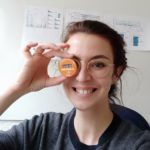Link to Pubmed [PMID] – 38341605
Link to DOI – 10.1186/s12958-023-01181-8
Reprod Biol Endocrinol 2024 Feb; 22(1): 21
Biomarker identification could help in deciphering endometriosis pathophysiology in addition to their use in the development of non invasive diagnostic and prognostic approaches, that are essential to greatly improve patient care. Despite extensive efforts, no single potential biomarker or combination has been clinically validated for endometriosis.Many studies have investigated endometriosis-associated biological markers in specific tissues, but an integrative approach across tissues is lacking. The aim of this review is to propose a comprehensive overview of identified biomarkers based on tissue or biological compartment, while taking into account endometriosis phenotypes (superficial, ovarian or deep, or rASRM stages), menstrual cycle phases, treatments and symptoms.We searched PubMed and Embase databases for articles matching the following criteria: ‘endometriosis’ present in the title and the associated term ‘biomarkers’ found as Medical Subject Headings (MeSH) terms or in all fields. We restricted to publications in English and on human populations. Relevant articles published between 01 January 2005 (when endometriosis phenotypes start to be described in papers) and 01 September 2022 were critically analysed and discussed.Four hundred forty seven articles on endometriosis biomarkers that included a control group without endometriosis and provided specific information on endometriosis phenotypes are included in this review. Presence of information or adjustment controlling for menstrual cycle phase, symptoms and treatments is highlighted, and the results are further summarized by biological compartment. The 9 biological compartments studied for endometriosis biomarker research are in order of frequency: peripheral blood, eutopic endometrium, peritoneal fluid, ovaries, urine, menstrual blood, saliva, feces and cervical mucus. Adjustments of results on disease phenotypes, cycle phases, treatments and symptoms are present in 70%, 29%, 3% and 6% of selected articles, respectively. A total of 1107 biomarkers were identified in these biological compartments. Of these, 74 were found in several biological compartments by at least two independent research teams and only 4 (TNF-a, MMP-9, TIMP-1 and miR-451) are detected in at least 3 tissues with cohorts of 30 women or more.Integrative analysis is a crucial step to highlight potential pitfalls behind the lack of success in the search for clinically relevant endometriosis biomarkers, and to illuminate the physiopathology of this disease.

